

Mercedes Drive Pilot Beats Tesla Autopilot By Taking Legal Responsibility
source link: https://www.roadandtrack.com/news/a39481699/what-happens-if-mercedes-drivepilot-causes-a-crash/
Go to the source link to view the article. You can view the picture content, updated content and better typesetting reading experience. If the link is broken, please click the button below to view the snapshot at that time.

Mercedes Drive Pilot Beats Tesla Autopilot By Taking Legal Responsibility
Mercedes will accept full legal responsibility for the vehicle whenever Drive Pilot is active. The automaker hopes to offer the system in the U.S. by the end of 2022.
Mar 20, 2022
Mercedes' new Drive Pilot seems, in operation, like many "traffic jam assistant" technologies already on sale today. On certain highways, below 40 mph, a Drive Pilot-equipped S-Class or EQS will take control of the car's speed, steering, and brakes to move you along in traffic. But there's one key difference: Once you engage Drive Pilot, you are no longer legally liable for the car's operation until it disengages. You can look away, watch a movie, or zone out. If the car crashes while Drive Pilot is operating, that's Mercedes' problem, not yours.
This distinction puts Mercedes' semi-autonomous system miles ahead of Tesla's AutoPilot or General Motors' SuperCruise. And it's not just a concept system. Drive Pilot has already been approved for use on all German highways. Mercedes is hoping to deploy it in the U.S. by the end of 2022.
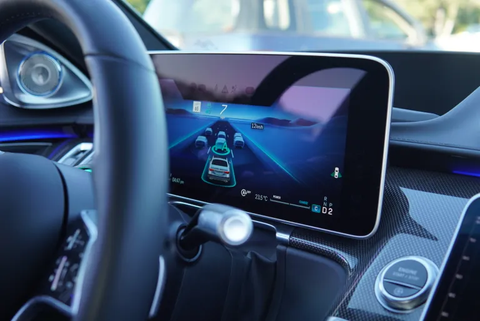
"By the end of last year, we were the first [automaker] to get international certification for a Level 3 system," Drive Pilot senior development manager Gregor Kugelmann told Road & Track. "We're aiming to get that for California and Nevada by the end of this year, and we're checking a lot of other states as well."
The United States has little in the way of federal regulations pertaining to automated driving. Individual states handle their own laws governing such systems, and decide which companies, if any, are approved to operate semi-autonomous vehicles on public roads. Right now, the vast majority of states have no framework in place to regulate the deployment of autonomous or semi-autonomous vehicles. This is a hurdle, but Mercedes understands that widespread propagation of this new technology will require a lot of hand-in-hand work with governments.
"I would expect that, here in the United States, some other states may adopt the rules that will be applied by pioneer states like California and Nevada," George Massing, Mercedes' vice president of automated driving, told R&T in an interview. "And then, they'd have maybe two or three specific rules included in their region. But we will probably have to deal with each individual state because of the way you guys are organized as a country."
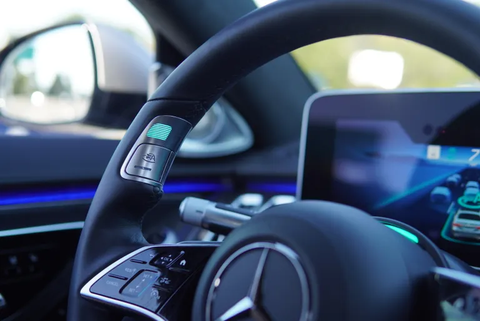
Mercedes' willingness to accept liability for its semi-autonomous vehicles will surely help its chance of satisfying various regulators. While the distinction may sound like legal hair-splitting, removing driver responsibility required massive technological improvement over existing Level 2 systems. (As a reminder, the most advanced semi-autonomous systems available in the U.S., including Tesla Autopilot and GM SuperCruise, still fall under Level 2, where the driver is expected to actively supervise the system and be ready to take over instantly whenever the system disengages.) Drive Pilot has more redundancies, with additional power supplies to critical systems. It uses higher quality image processing and LiDAR scanners, and collates positioning data from GPS, Galileo, and GLONASS satellites for guidance. Unlike all currently available driver-assist systems, Drive Pilot is designed to give drivers a 10-second warning before switching off; engineers had to make sure that, in every situation, the system would safely and faultlessly hand over control.
These self-imposed requirements meant Mercedes had to solve for conditions that current Level 2 software simply can't handle. For instance, today's semi-autonomous systems simply don't know how to recognize approaching emergency vehicles; it's the driver's responsibility to notice flashing lights and sirens, and take over control of the vehicle to make way. Since Drive Pilot (and its manufacturer) are legally responsible for the vehicle's operation, the software has to follow the law. The complexities of clearing a path for an approaching ambulance, fire truck, or police vehicle are beyond the system's abilities; instead, the software uses microphones and cameras to detect emergency lights and sirens far enough in advance to issue the full 10-second warning before manual takeover.
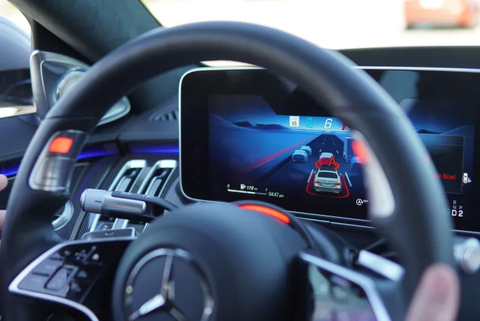
That lengthy buffer interval makes Drive Pilot the first system where drivers can focus on something else entirely while the vehicle operates itself. Mercedes says the system can handle aggressive cut-ins from other drivers, traffic stopping short, or even debris in the road. In Germany, drivers can legally use their cellphones while Drive Pilot is engaged, a first for semi-autonomous systems; Mercedes doesn't expect state governments in the U.S. to amend drowsy or distracted driving laws to exempt autonomously driven vehicles any time soon. Still, the difference between constantly monitoring frequently flummoxed beta software, versus truly being able to hand over driving responsibility, should be huge.
There's a catch, of course: Handing over driving responsibility completely requires extremely particular circumstances. Right now, Drive Pilot can only engage at speeds under 40 mph (60 km/h in Germany) on limited-access divided highways with no stoplights, roundabouts, or other traffic control systems, and no construction zones. Eligible roads must be mapped by Mercedes for Drive Pilot use (similar to GM SuperCruise); the automaker has already mapped every such highway in Germany, and most of those in Nevada and California. The system will only operate during daytime, in reasonably clear weather, without overhead obstructions. Inclement weather, construction zones, tunnels, and emergency vehicles will all trigger a handover warning. And no, you can't close your eyes or go to sleep while it operates.
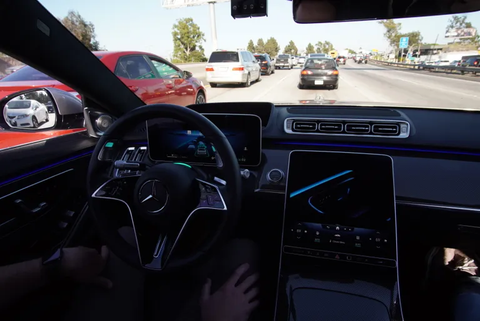
Mercedes invited journalists on a ride-along demonstrating Drive Pilot in Los Angeles, with a trained driver at the wheel. My time in a Drive Pilot-equipped S-class was unbelievably normal. Aside from the development display showing the computer's view of the world (complete with labels categorizing every vehicle in view, plus a weight estimate), the sensation was exactly the same as riding in a chauffeur-driven sedan. Drive Pilot was noticeably smoother and more competent than any currently available semi-autonomous driver aid, especially when other vehicles would cut close in front of us, a phenomenon that, on Level 2 vehicles, often requires drivers to intervene. The only snag I witnessed was when the vehicle picked up on a set of flashing amber lights on a road sign and confused them for emergency lights, prompting the 10-second warning and manual take-over.
Many of us have grown accustomed to the brazen moves of Tesla's Autopilot, a system that often puts its driver in a precarious situation, then unceremoniously disengages, handing over control with little warning and no concern for whether the driver is paying attention. Against this background, Drive Pilot is a watershed moment for the fledgling autonomous car industry. For the first time, a consumer-facing semi-autonomous driving system is not leaning on the crutch of the beta test, or relying on the constant vigilance of the human operator. Drive Pilot is a confident, competent robot that is, finally, legally driving.
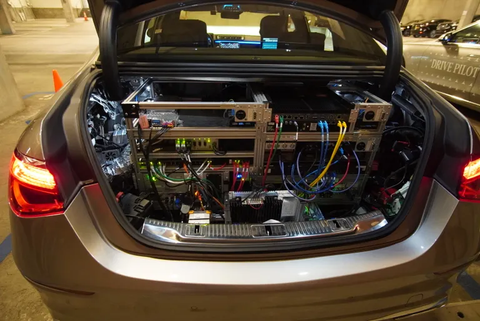
Recommend
About Joyk
Aggregate valuable and interesting links.
Joyk means Joy of geeK